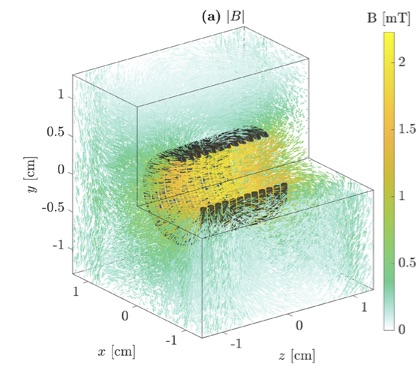Development of correlative multi-modal characterisation techniques
Polarisation for first science and beyond at the ESS – Polarised Imaging (SREss3).
A joint project between Lund University (LU) and the European Spallation Source ERIC (ESS) in collaborations with researchers in Paul Scherrer Institute (PSI) and Technical University of Munich (TUM) focuses on developing innovative science using polarised neutron imaging technique and carrying out polarised neutron instrumentation work on the ESS imaging instrument ODIN. The project supports experiments aiming to advance the scientific applications and polarised imaging techniques, including its connection to polarised Small Angle Neutron Scattering. The project also supports the technological development of polarised 3He based neutron spin filter.
Polarised neutron imaging is an active and a relatively new field. The method is based on the facts that (1) for most materials, a large percentage of neutrons penetrate a bulk sample without being scattered or absorbed, and (2) the neutron carries a magnetic moment, which interacts with the magnetic fields inside the sample. Depolarisation is the earliest and widely applied method, which has been virtually the only method in the field until a decade ago. Due to the high sensitivity of neutrons to weak magnetic fields, very small magnetic moments can be detected, which allows tracking ferromagnetism towards quantum phase transitions in the search for novel magnetic structures in the vicinity of quantum critical points.
Since 2008, new methods of polarimetry [M.Strobl et al 2019 J. Phys. D: Appl. Phys. 52 123001], and dark field interferometry using either the spin-echo principle (Larmor labelling) [M.Strobl et al 2015 Sci Rep 5 16576], or gratings [J.Valsecchi et al 2019 Nat Commun 10 3788] have been developed. Latest developments combine straightforward polarized neutron imaging with dark-field contrast imaging, providing both observations of the distinct domain boundaries and magnetic field strengths and orientations. These are illustrated by figures below. As a step forward, the utilization of polarized neutrons in grating interferometry enables mesoscopic observations of domain sizes and magnetization and thus access to magnetic phase transformation behaviour.
The new ESS imaging instrument ODIN will further advance both the techniques and the applications in neutron imaging. Polarisation will be an integral part of ODIN’s instrument suite for user experiment. As one of this project’s aims, the above advances in polarised neutron imaging techniques will be incorporated into ODIN’s polarisation design.
Polarised 3He based neutron spin filter (NSF) has found increasing use in neutron applications due to its advantages of large area cross-section, large angular coverage, broad wavelength bandwidth, electronic switching of polarisation. In a future development, it will be one of the options for polarisation analyser on ODIN. This project will take on some of the technological improvements of the NSF for neutron applications.


